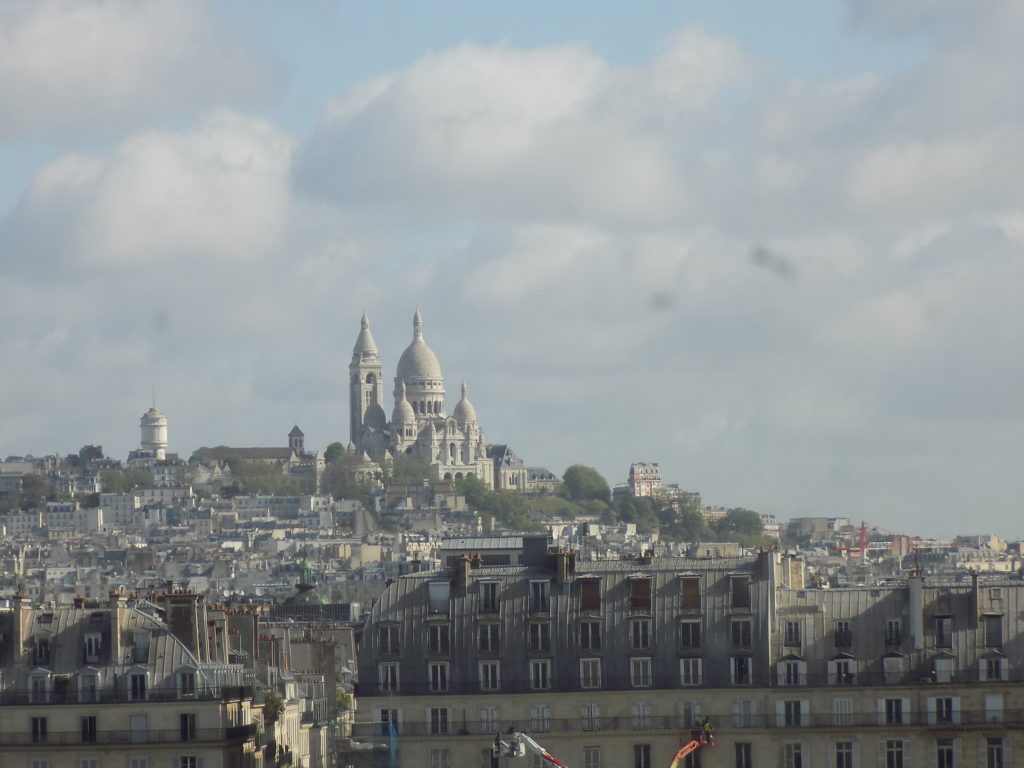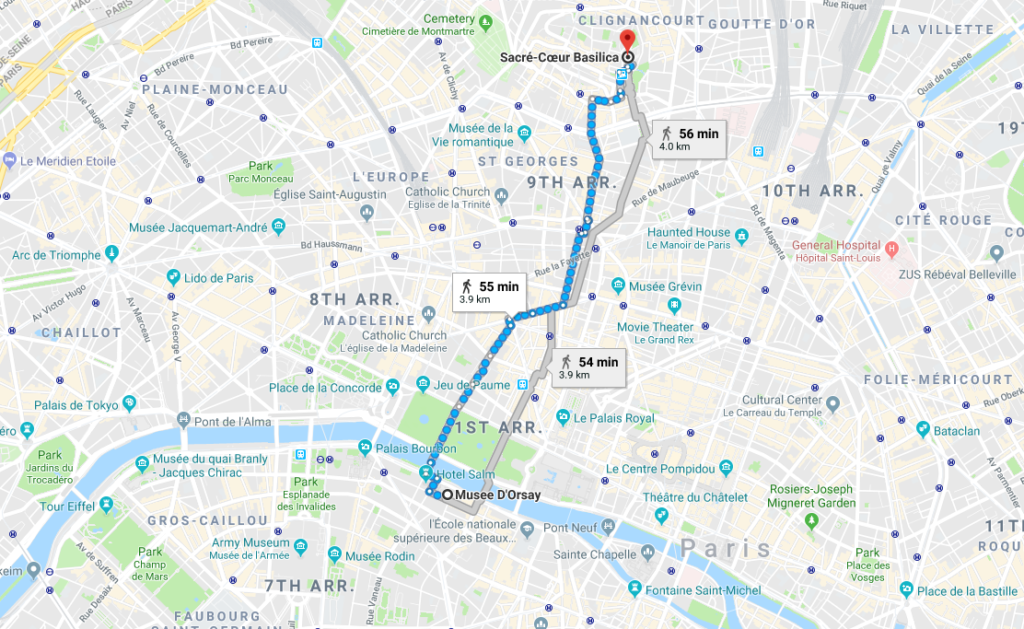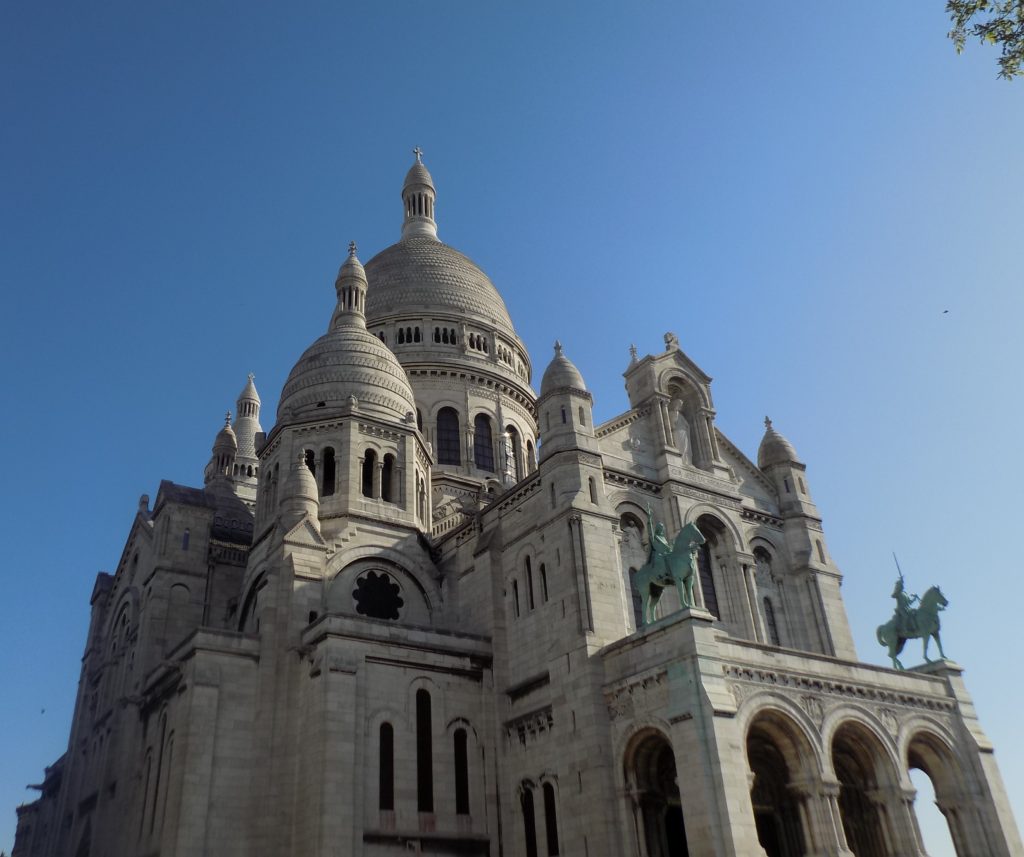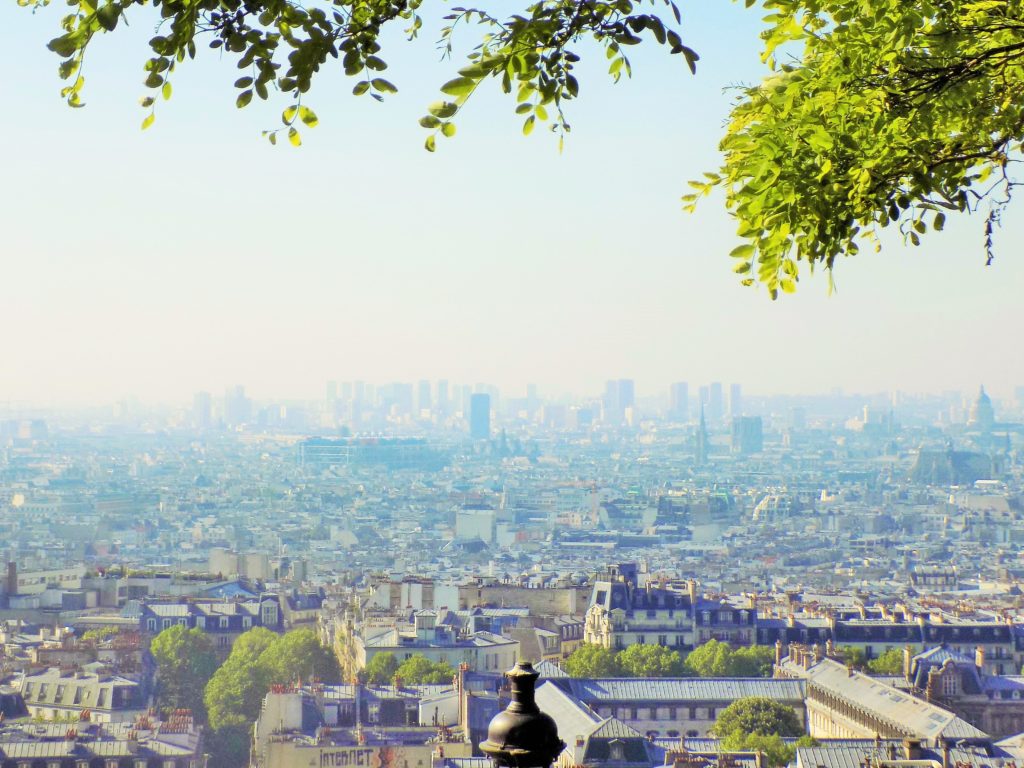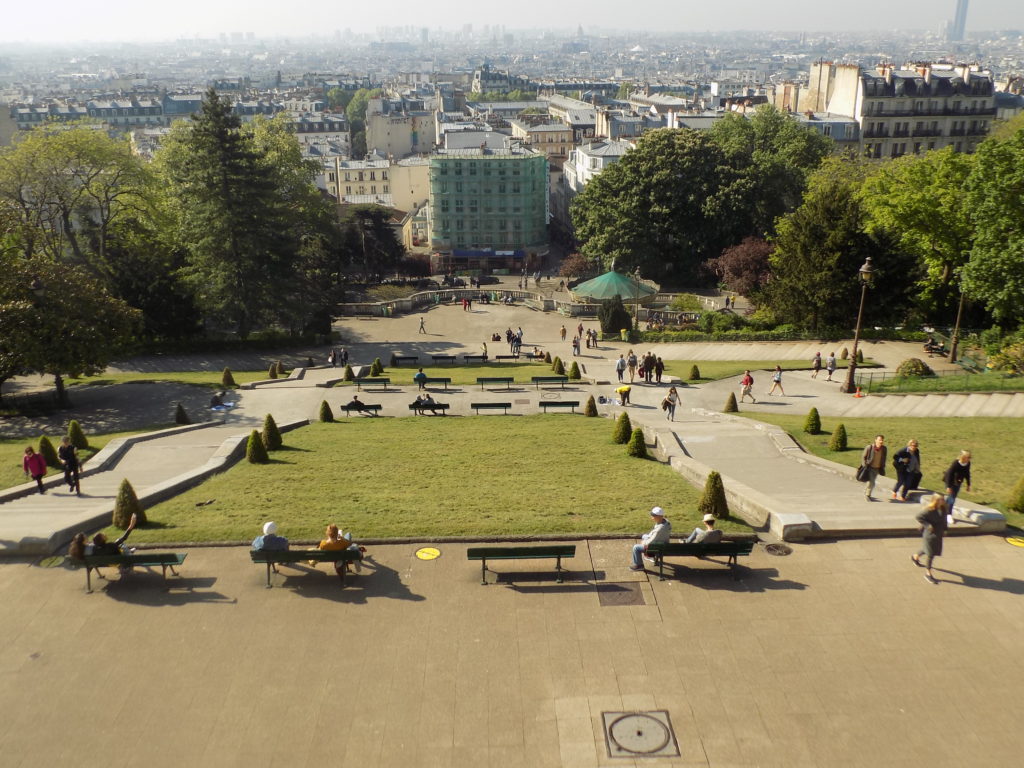The Sacred Heart of Montmartre.
It’s been a long time since I posted my account of visiting the Musée D’Orsay so you might not remember seeing this photo I took through the clock window.
The unmistakable profile of the Basilica of Sacré-Coeur is the prominent edifice. As the map below shows, it’s about a four kilometer walk between the two which I hope gives you some idea of how dominant the church is as a visual symbol of the Butte Montmartre.
You might be surprised to learn, then, that the church is quite young by French standards. It’s been scowling down on Paris for barely a century since its completion date. Although construction on the Basilica began when the foundation stone was laid in 1875 – some 14 years before the Eiffel Tower – the building wasn’t completed until 1914 and, because of the intervention of the First World War, wasn’t consecrated until 1919 some months after the war ended.
It required, I think, an interesting confluence of events that prompted the construction of the church. The first came on a cloudy day in October 1872 when Cardinal Joseph-Hippolyte Guibert, the Archbishop of Paris reportedly stood at the top of the butte and had a vision as he took in the panoramic view of Paris. The clouds cleared and he allegedly said, “It is here, it is here where the martyrs are, it is here that the Sacred Heart must reign so that it can beckon all to come.” (We will never know if Guibert was also thinking of Saint Denis who was executed on Montmartre in 270 and reportedly carried his head nearly 7 kilometers across Paris to the spot where he wanted to be buried.)
The previous few years had been – and the coming months would be – tumultuous for both the nation of France and the city of Paris. In January 1871 the Government of National Defense had essentially surrendered to the Prussians. At the end of March, the short-lived Paris Commune controlled the city. And in May 1873, the government led by Adolph Thiers would collapse. The conjunction of these circumstances didn’t necessarily bode well for the immediate construction of this large basilica.
However, as the Third Republic established itself, conservative segments of the French populace reacted adversely to many of the political and social innovations imposed by the Commune that they viewed as morally degenerate. They therefore sought to impose a government they called ordre moral (moral order) and the church of Sacré-Coeur would become its symbol.
The government passed a law of public utility to seize land at the summit of Montmartre for the construction of the basilica. (This would be akin to though not exactly the same as what we in the Sates would call “eminent domain.” In Canada it would be “expropriation,” in Australia “compulsory acquisition,” or “compulsory purchase” elsewhere in the U K) In the typical French manner, however, before construction started, rather than simply selecting an architect, the government held a design competition. Seventy-seven architects entered and Paul Abadie submitted the winning design although he wouldn’t live to see the building’s completion.
In what I see as an arcane feature of Catholic practice, the church of Sacré-Coeur is considered a minor basilica. (Initially the term “basilica” was used to describe a church built in a particular architectural style. Then in the 18th century, the term took on a canonical meaning that was unrelated to its architecture.) Basilicas in this canonical sense are divided into major (four – all in Rome) and minor basilicas. There are also sub-classifications of minor basilicas. Three are called papal minor basilicas and four are termed pontifical minor basilicas. The remaining 1,750, of which Sacré-Coeur is one, are simply minor basilicas.
The mild regret I mentioned in part one is that while I had two of the iconic views – this hazy one of the skyline
and this one of the steps so closely associated with Sacré-Coeur (in this case looking down at the Place Louise Michel) –
I didn’t get the spectacular city views available only from the dome of the basilica. On the positive side, I saved six euros and avoided the 600 step (300 in each direction) ascent and descent so I’ll take solace from that.
Having seen the view and the basilica’s exterior, we continued our exploration of what was once the village of Montmartre and, just as David and Alison had predicted, by 10:30 the streets were noticeably more crowded. (Montmartre, by the way, is in the 18th arrondissement but it was once a suburb. Recall that until 1860 Paris consisted of 12 arrondissments expanding to its current 20 in that year. The name is the Gallicized version of its Latinate name Mont Martis {Mountain of Mars} a holdover from Merovingian times.)
Even with the crowds, we could have easily spent more time in the village but we had other plans and a lunch date to keep. We passed on the chance to view the Dali Exhibition at the Espace Montmartre and never really considered visiting the winery, the Montmartre Museum, or the Cemetery.
If you look again at the picture of Sacré-Coeur I took from D’Orsay, you’ll see another tower to the left of the basilica. This is, in fact, the water tower and Pat and I did walk past it in our meanderings of which you can see more here.
On a personal note, I feel compelled to mention that despite wandering somewhat aimlessly through the district and despite the crowded presence of artists I never had a Gene Kelly – Nina Foch moment – not that I expected it. (I also never fulfilled my long-held dream scenario of finding the right spot where one evening I could walk along the Seine, dance, and sing “Love is Here to Stay” as Kelly did with Leslie Caron in the same film even knowing that the movie was filmed almost entirely on sound stages at MGM in Hollywood. This demonstrates once again that life is not the movies.)
One other noteworthy event happened while Pat and I were standing near Abbesses trying to determine which way the map on my phone was directing us to walk to find our bus. A young woman came up, offered her help and gave us accurate directions in good English. Yet one more person who shattered the myth of the rude Parisians.
Next, we’ll get close to the Eiffel Tower and have a reunion with two of our shipmates.
